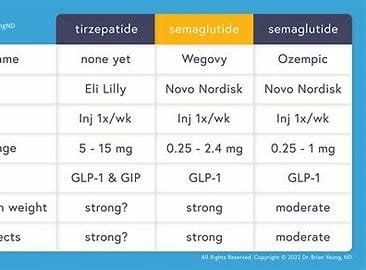Table of Contents
Introduction

Haloperidol is an accepted antipsychotic drug for the treatment of various psychoses and neurologic disorders.
1. What Is Haloperidol and What Are Its Applications?
Haloperidol, a first-generation antipsychotic, belongs to the butyrophenone class of drugs. It works by blocking dopamine receptors in the brain, which helps regulate mood, thought processes, and motor activities.
Primary Uses of Haloperidol:
Schizophrenia: Reduces symptoms like delusions, hallucinations, and disorganized thinking.
Bipolar Disorder: Controls manic episodes effectively.
Tourette Syndrome: Reduces severe tics and vocal outbursts.
Severe Agitation or Aggression: Used in acute settings to calm patients.
Nausea and Vomiting: Sometimes used off-label for severe, treatment-resistant conditions.
2. Preparations of Haloperidol
Haloperidol is prepared in a variety of forms to accommodate patients’ needs and clinical situations:
Tablets: The tablets are widely available in the strengths of 0.5 mg, 1 mg, 2 mg, 5 mg, and 10 mg.
Oral Solution: This preparation is suitable for patients who have trouble swallowing.
Injectable Forms:
Immediate-Release Injection: This is an emergency medication to produce quick sedation.
Long-Acting Depot Injection: Given every 4 weeks for steady-state therapy in chronic diseases.
3. Haloperidol Advantages
Haloperidol has been a part of psychiatric drugs for a long time, considering the efficacy that it provides.
Rapid Onset of Action: Acts quickly to reduce acute psychosis and agitation.
Broad Spectrum Activity: Potent against many psychiatric and neurological disorders.
Long-Acting Formulation: Minimizes the inconvenience of daily administration.
Well-Established Efficacy: Supported by several decades of clinical experience and research.
Cost-Effective: Generally, more economical than newer antipsychotics.
4. Haloperidol Disadvantages
Despite its advantages, Haloperidol has restrictions and even side effects. Be extremely cautious about that too.
Extrapyramidal Symptoms (EPS)—Tremors
-Rigidity
-Restlessness
Tardive Dyskinesia
Long-term result of this medicine by creating involuntary movements of different kinds.
Sedation: Especially in higher doses of dosing, drowsiness can be seen or fatiguability.
Weight gain can make users prone to more significant issues of metabolic disorders during extensive exposure.
Prolonged QT Interval: Susceptible may have a danger for arrhythmias caused during severe cardiac dysrhythmias.
5. Haloperidol Dosage That Can Be Recommended

The dosage of Haloperidol is determined by the patient’s age, condition, and treatment goals.
Adult Dose
Schizophrenia and Psychosis
Initiation: 0.5–5 mg orally 2–3 times a day.
Maintenance: Dosage is adjusted to the smallest effective dose.
Acute Agitation
2–5 mg parenterally; repeat, as needed, every 4–8 hours in acute agitation.
Geriatric Patients
Begin with much lower doses (e.g., 0.5–1 mg/day) to minimize side effects.
Pediatric Dose
Dosage is usually lower and adjusted depending on the child’s weight and condition. One should consult a pediatric specialist.
6. Cost of Haloperidol
The cost of haloperidol differs by place, brand, and formulation.
Tablets: $5–$15 for a 30-tablet pack (generic); Oral Solution: $20–$50 for one bottle; Injectables: Immediate-release injections: the cost is $10–$20 per vial.
Long-acting depot injections: $100–$200.
7. Frequently Asked Questions About Haloperidol
Q1. Is haloperidol a drug that can be used for long-term treatments?
Haloperidol has been used for long-term treatments under medical supervision. Routine monitoring for side effects is essential, such as tardive dyskinesia and metabolic issues.
Q2. Is Haloperidol habit-forming?
No, haloperidol is not habit-forming. It can cause withdrawal symptoms when stopped abruptly. Taper always under the doctor’s guidance.
Q3. How long does it take for Haloperidol to start working?
Haloperidol injection will be effective within 30–60 minutes. Oral preparations will take a little longer, and a complete effect is seen after some weeks of regular intake.
Q4. Are there any other medications that can be used in place of haloperidol?
Yes, as second-generation antipsychotics, olanzapine, risperidone, and aripiprazole are generally less adverse but more costly than the first generations.
Q5. Can it be administered to pregnant and breastfeeding mothers?
Haloperidol is categorized in Pregnancy Category C. It should thus be employed during pregnancy or during breastfeeding by a doctor weighing all pros and cons.
Conclusion

Haloperidol is one of the most important drugs in the management of psychiatric and neurological disorders, given its established efficacy and versatility. However, the side effects and risks associated with this drug require careful consideration and regular medical supervision. Discuss your symptoms and treatment goals with a healthcare provider to determine if Haloperidol is the right choice for you.
Understanding its uses, formulations, pros and cons, dosage guidelines, and costs will help patients and caregivers make informed decisions about this powerful antipsychotic medication.



